Best Men’s Backpacks
Top 10 Rated Backpacks 2024
By S. Dee Davis
Following are some of the primary factors we considered when selecting our top 10 backpacks (for men) list. Please see our complete backpack buying guide for more information on how we chose, and you should choose the right backpack for your hiking or camping adventure.
1. Comfort and Wearability
2. Volume Capacity
3. Weight Efficiency
4. Compartmental Features
5. Hydration Capabilities
6. External Straps and Stability Features
7. Frame Support
8. Cost/Value
|
Capacity: 75 liters |
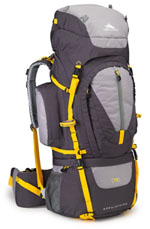 Available for $129.99, the High Sierra Appalachian 75 Internal Frame Pack offers a great value with its top-loading design and a generous capacity…
Available for $129.99, the High Sierra Appalachian 75 Internal Frame Pack offers a great value with its top-loading design and a generous capacity…
read more
|
Capacity: 4,760 cubic inches |
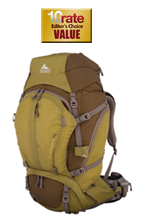 At the intersection of performance and cost lies this pack. A large one (based on torso size) carries enough gear for a full week of three-season trekking, and it’s as comfortable as anything on the market …
At the intersection of performance and cost lies this pack. A large one (based on torso size) carries enough gear for a full week of three-season trekking, and it’s as comfortable as anything on the market …
read more
|
Capacity: 6,500 cubic inches |
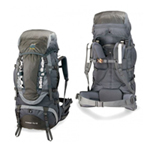 With this pack, you’ll be able to stay out long enough that they’ll send search and rescue teams after you. When the teams get there, you’ll see that they use the same pack…
With this pack, you’ll be able to stay out long enough that they’ll send search and rescue teams after you. When the teams get there, you’ll see that they use the same pack…
read more
|
Capacity: 3000 cubic inches |
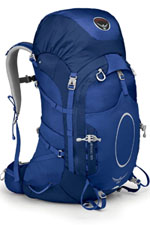 A favorite among avid hikers and travelers, the Osprey Packs Atmos 50 Backpack combines a sharp look with super comfort on the trail. Its suspension system…
A favorite among avid hikers and travelers, the Osprey Packs Atmos 50 Backpack combines a sharp look with super comfort on the trail. Its suspension system…
read more
|
Capacity: 20 liters |
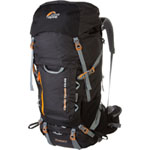 The Lowe Alpine Cerro Torre is an excellent choice if you’re just getting into backpacking. Cost-effective, reasonably lightweight, and smaller than…
The Lowe Alpine Cerro Torre is an excellent choice if you’re just getting into backpacking. Cost-effective, reasonably lightweight, and smaller than…
read more
|
Capacity: 7,000 cubic inches |
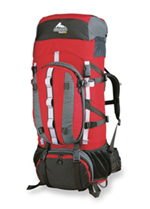 When you need to get away for a really long time, this is the pack you want on your back. The Denali Pro was also designed for professional guides, and with its whopping 7,000 cubic inches of cargo space…
When you need to get away for a really long time, this is the pack you want on your back. The Denali Pro was also designed for professional guides, and with its whopping 7,000 cubic inches of cargo space…
read more
|
Capacity: 3950 cubic inches |
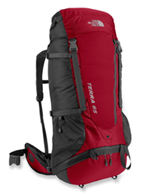 This is another good one if you’re a first-time backpacker. The Terra 65 is a little smaller, and it can be found relatively cheap. The downside is it uses polyester, which isn’t quite as durable…
This is another good one if you’re a first-time backpacker. The Terra 65 is a little smaller, and it can be found relatively cheap. The downside is it uses polyester, which isn’t quite as durable…
read more
|
Capacity: 1342 cubic inches |
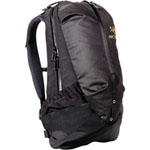 As soon as we put on the Arcteryx Arro 22 backpack, we noticed that it was built for comfort—which is great if you’re looking for an all-purpose hiking/camping backpack. This backpack rests high on the back…
As soon as we put on the Arcteryx Arro 22 backpack, we noticed that it was built for comfort—which is great if you’re looking for an all-purpose hiking/camping backpack. This backpack rests high on the back…
read more
|
Capacity: 3,950 cubic inches |
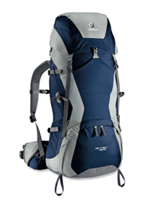 It’s not technically an ultralight pack – that’s a different top-ten list for a different time – but this pack sure does feel that way. Checking in at less than four pounds, it still can pack nearly 4,000 cubic inches …
It’s not technically an ultralight pack – that’s a different top-ten list for a different time – but this pack sure does feel that way. Checking in at less than four pounds, it still can pack nearly 4,000 cubic inches …
read more
Backpack Buying Guide
How to Choose the Right Backpack for your Hiking/Camping Trip
There’s a reason why backpacking and hiking are considered two separate disciplines by outdoors junkies: The backpack. A day hiker can carry everything they need to get from trailhead to destination and back in the same pack that a fourth grader carries to school every day. But when it comes to multi-day trips with everything needed for human survival on your back, the pack becomes the integral piece of equipment that allows you to enjoy all your time away from the comforts of civilization.
With that in mind, it’s vitally important that you choose the right backpack for you and the expeditions you’re planning on taking. The right pack filled with the right equipment can be the difference between a comfortable, exciting trip and a miserable one (or the difference between a safe trip and a hazardous one). Use these rules when considering the pack you’re going to buy, and always be sure to put on a few packs at your local retailer as well to get a feel for their features.
The most important factor to consider when choosing a pack? Comfort, comfort, comfort. You’re going to be carrying everything you need to survive on your back; depending on the nature of your gear, you could have as much as 90 pounds in that bag. While every spine is unique in the way it interacts with a pack, one backpack fact is universal: The more points of contact between the load and your body, the less pressure on each individual point. Try lifting a loaded grocery bag with one finger sometime, then do so again using your whole hand. Much easier, right? Extend the same concept to a backpack. A multi-day pack will have a hip belt, which encircles your waist and transfers the weight of the load onto your hips; the ubiquitous shoulder straps and a sternum strap, which crosses from one shoulder strap to the other across your chest and takes pressure off your shoulder muscles.
Make sure you check those points of contact when you’re shopping around for a pack. Do the shoulder straps sit comfortably? Where on your chest does the sternum strap cross, and is that a spot that won’t chafe when you’re wearing the pack eight hours a day? And most of all, the hip belt. Backpacks are designed with a frame system to help transfer weight down the side closest to your body (hereafter referred to as the front), and eventually that weight is transferred onto the hip belt. This is good – the muscles in your legs and the bones in your pelvis and thighs are much stronger than your back and shoulders, and they are much better-equipped to bear weight for a long day of hiking. The hip belt should be able to fit snugly, resting just atop your hip bones on both sides. Again, test the belt for chafe points (although any good backpack is designed with ample padding in the hip area) and be sure that it doesn’t slide down below the crest of your hips (which will render its load-transfer feature worthless). All the straps should be adjustable; test the straps for the ease of adjustment as well.
Next, the frame. The front of the backpack can be shaped to the intricacies of your spine, which will further the comfort when carrying a load. If you’re buying from a retailer, be sure to ask them to help you custom-fit the pack. Some packs have flexible metal rods that run vertically down the front and can be bent to mimic the curves of your spine; some have removable pads that can actually be heated in an oven and then formed to your lumbar region.
Now that we’ve covered comfort, let’s turn to more of the bells and whistles of a multi-day backpack. Before you start looking at the features of individual packs, though, consider what you’ll be using your pack for. Where you go, what you do when you get there and how long you plan on staying out will have a vast impact on what you need your pack to do. You’re going to need a lot more gear for a week-long expedition in the Canadian Rockies than you will for a traverse of Great Smoky Mountains National Park in the summer; select a pack accordingly. Here are a few of the key factors to consider once you know where you might be taking your pack:
Volume
The more space inside of your pack, the more stuff you can carry. Again, refer to the wide variance in gear you’ll need based on where you travel. A pack with 4,000 to 5,000 cubic inches is considered appropriate for a trip of five to seven days under summer conditions (bear in mind that in the mountains, it can get cold any time of the year).
Weight
You have to decide for yourself how much you want to carry. A larger pack with more bells and whistles can allow you to carry additional gear for a mountaineering expedition or a two-week backpacking epic, but that’s more weight on your back. Even the best load-transfer system can’t hide the fact that you’re carrying 30 to 40 percent of your own body weight on your back.
The Compartments
Some packs have a large aperture at the top through which all gear must pass; some are compartmentalized with a separate space at the bottom that opens onto the back side of the pack. Usually this compartment is designed to hold a sleeping bag. Many packs have side zippers in this area even if the pack has just one large compartment. There are also smaller pockets on the sides as well as pockets in the “brain” (a smaller component that covers the top of the main compartment).
Hydration capabilities
You won’t survive on a backpacking trip without ample water, so make sure that your pack can carry it. Packs typically have water bottle pouches on each side just above the hip belt; make sure that these pouches are large enough to carry your bottles. Also, many newer packs are designed to carry a water bladder on the interior, with a hose that hangs around your neck area for easy drinking while walking.
External Straps
Whether you’re carrying a bulky sleeping pad, extra pair of shoes or sandals or a bulky cookpot that doesn’t readily fit inside your pack, it’s helpful to have numerous tie-down straps on the back side of your pack. In addition to allowing you to carry more gear than the internal volume would suggest, these straps can also be tightened down to stabilize your load.
Remember, always keep in mind what you’re using the pack for. Also consider that extra features are generally easier to live with than live without; generally, the trade-off for additional features is extra weight and increased cost.
 |
As an avid golfer and tennis player for most of his life, he enjoys researching the latest in golf and tennis technology as well as analyzing his own game. He has been a writer and reviewer for a dozen years… See more about S. Dee Davis |
Featured Backpacks Articles
What to Take on a Backpacking Trip
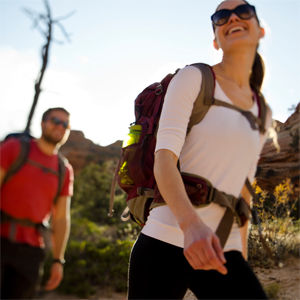
As stated already in the buying guide, how much gear you’re carrying will have a huge impact on what kind of bag you use. Here is a rough list of essential things you’ll want with you on a backpacking trip. Depending on … [more]
More Backpacks Top 10 Lists
Top 10 Women’s Backpacks
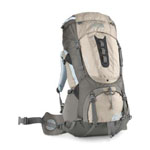
Following are some of the primary factors we considered when selecting our top 10 women’s backpacks list. These packs vary slightly in construction to benefit a women’s different build. Please see our complete backpack buying guide for more information on how we chose, and you should choose the right backpack for your hiking or camping adventure… [more]
More Backpacks
Filed Under: Backpacks • Golf • Top 10 Lists
